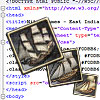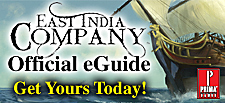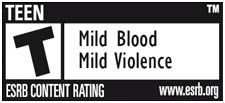- Overviews
- East India Company
- Pirate Bay
- Privateer
- Designer's Cut
- Battle of Trafalgar
- Collection
- Ship Introductions
- Designer's Blog
- Developer's Video Diary
- Modding Instructions-series
 9th October 2009:
9th October 2009:Modding part 6.
This time we learn how to translate the East India Company to your own language.
Read more » 15th July 2009:
15th July 2009:Naval warfare, part II.
Lead designer Kim Soares takes the helm of a frigate and shouts: "Port side, FIRE!"
Read more »
 Keep yourself posted on the latest news about East India Company.
Keep yourself posted on the latest news about East India Company.
Email-address:
 Sign up for the Paradox newsletter, and get all the news directly from Paradox Interactive.
Sign up for the Paradox newsletter, and get all the news directly from Paradox Interactive.
Email-address:


Designer's Blog: Use money to make it
As anyone reading this hopefully knows by now, trading is major part of East India Company.
All ports, about forty, have items on sale. These can be divided into three categories: Export Items available only at the European Home Port of your company, Generic Trade Items available from different foreign ports and Main Trade Items (MTI) only available on specific foreign ports.
Rule of thumb is that you get profit by selling stuff to a port that does not have it naturally available. Different items have different profit margins, making some items more valuable than others. MTI's like silk, tea and spices have the best margins.
Campaign missions dictate what MTI's you must import to your Home Port in order to successfully complete the campaign mission. There are always multiple MTI's and you do not have to import all of them, giving you some room to maneuver in that sense. You have years or even decades to meet these import quotas, but the amounts required get larger as the game progresses. At the start of the 17th century your Company directors are happy if you bring in some tons, but by the mid 18th century amounts are calculated in tens of thousands of tons.

"I'll buy everything you got."
MTI's can only be obtained from specific ports. Gold for example is available only in Africa at Accra and Luanda. Spices can be found only in Surat, Bombay and Goa. The amount available is finite and port can be bought empty, if only temporarily. So, having other companies visiting the same native ruled ports can easily see you getting only meager amounts or nothing at all.
Conquering a port makes you the only one able to trade there (alliance enables trading in ports controlled by ally). In addition, you can then upgrade buildings inside the port. In terms of trading, the most important building is the Trading Post. Upgrading it gives you a discount to the price you pay and higher levels also mean that the port gets more of the local MTI and can have larger amounts available at the Trading Post.
Getting that discount is essential. This is because of the price dynamics: The less there is specific MTI available in the port, the higher the price you pay for it. The more you sell MTI to your Home Port within a certain time frame, the lower the profit will get. This works the other way around too, so that if there is abundance of MTI available, you pay less for it and if you do not sell specific MTI into your Home Port for some time the price you get will rise. Building a warehouse into the port enables you to buy and store MTI when its price is low even if you do not have fleet at the port right then.
This would be all very well and straight forward, was it not for those campaign mission import quotas. You have to meet the quotas regardless of the profit. Without securing your access to the ports producing those MTI's might see you not getting anything. Even when you have that access, you might end up making negative profit if you do not pay attention to price development and upgrade Trading Posts and Warehouses.

Running expenses
There are multiple things requiring money besides buying cargo. Ships cost money. Larger ships can cost very much. Loosing a fleet of east indiamen filled with spices can have devastating effect. Fleet commanders, crew and marines all get paid. Ship repairs and ammunition cost. Building upgrades cost and you have to pay for their upkeep too.
Getting your economy rolling and having a steady income is crucial for the success. In East India Company there is not that
point of critical mass that makes you self-sufficient after reaching it. Even large companies can be crippled and even small
companies can rise.
Kim Soares







